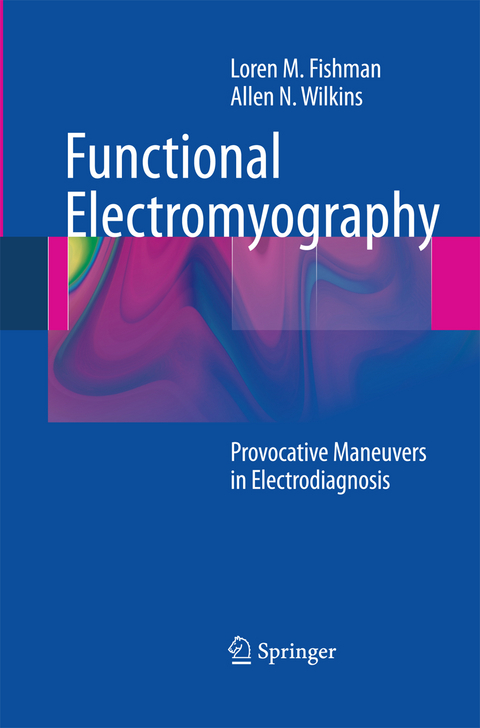
Functional Electromyography
Springer-Verlag New York Inc.
978-1-4899-9141-6 (ISBN)
Functional Electromyography: Provocative Maneuvers in Electrodiagnosis integrates electrophysiology further into the physical examination than ever before. It introduces the use of electrodiagnostic studies to quantify the neurological changes brought about by three provocative maneuvers commonly used in contemporary medicine. This widens the scope of electromyography while sharpening physicians’ diagnostic acuity. The book presents nerve conduction velocity (NCV) and H-reflex techniques to identify common conditions that are difficult to diagnose by any other means, often using the needle exam (EMG), MRI or musculoskeletal ultrasound to verify their clinical utility. Functional electromyography successfully diagnoses some cases of thoracic outlet syndrome, nearly all cases of piriformis syndrome, and offers a method for determining whether spinal stenosis or radiculopathy is the main pain generator when both are present in a single patient, even at the same level. This is particularly valuable because the standard conservative and surgical treatments for these two conditions are opposite, in spite of the identical symptom-set they produce. The book carefully describes each technique and persuasively documents their validity in statistical series and individual case presentations. It further guides the attentive electromyographer to adapt these methods to cases beyond those presented in its pages, suggesting a safe and scientific approach to other functional maneuvers of value to the electromyographer, and methods for validating one-time measures that may aid the electromyographer in clinical situations that are neither common nor easily analyzed. Hand drawn illustrations are included alongside text developed by experts in the field. An invaluable resource for physiatrists, neurologists, orthopedic surgeons, specialists in pain management and other providers, Functional Electromyography: Provocative Maneuvers in Electrodiagnosis represents a majorcontribution to the field of electrodiagnosis.
Chapter 1: Electricity in Medicine - Philosophy meets Physiology.- Chapter 2: Electrodiagnosis and the Physical Examination - Casting a fine net widely.- Chapter 3: Functional electrodiagnosis - Provocative Maneuvers define Diagnoses of Exclusion, and refine Dual Diagnoses.- Chapter 4: Neurological Thoracic Outlet Syndrome - Approaching a pathognomonic electrophysiologic sign.- Chapter 5: Treating Neurological Thoracic Outlet Syndrome Identified Functional Electrodiagnostically - Analysis of the Data.- Chapter 6: Piriformis Syndrome - Electrophysiology corrects Anatomical Assumption.- Chapter 7: Treating Piriformis Syndrome Identified Functional Electrodiagnostically - Analysis of the Data.- Chapter 8: Radiculopathy vs. spinal stenosis - Evocative Electrodiagnosis Identifies the Main Pain Generator.- Chapter 9: Basing Treatment on the Evoked Delay in Spinal Stenosis - Analysis of the Data.- Chapter 10: Extending the Methods of Functional Electrodiagnosis - Application to Common and Uncommon Conditions.
| Erscheint lt. Verlag | 1.10.2014 |
|---|---|
| Zusatzinfo | XVI, 171 p. |
| Verlagsort | New York |
| Sprache | englisch |
| Maße | 155 x 235 mm |
| Themenwelt | Medizin / Pharmazie ► Medizinische Fachgebiete ► Anästhesie |
| Medizinische Fachgebiete ► Chirurgie ► Neurochirurgie | |
| Medizinische Fachgebiete ► Chirurgie ► Unfallchirurgie / Orthopädie | |
| Medizin / Pharmazie ► Medizinische Fachgebiete ► Neurologie | |
| Medizin / Pharmazie ► Medizinische Fachgebiete ► Schmerztherapie | |
| ISBN-10 | 1-4899-9141-7 / 1489991417 |
| ISBN-13 | 978-1-4899-9141-6 / 9781489991416 |
| Zustand | Neuware |
| Informationen gemäß Produktsicherheitsverordnung (GPSR) | |
| Haben Sie eine Frage zum Produkt? |
aus dem Bereich


